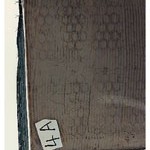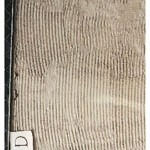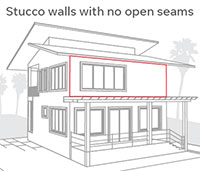PRESIDENT’S LETTER
 Substantial Changes to Residential Building Envelopes: Title 24 Updates Coming
Substantial Changes to Residential Building Envelopes: Title 24 Updates Coming
Nick Brown, Merlex
Stucco manufacturers are reporting an increase in the use of “one-coat” stucco systems, driven by changes in the California energy code, commonly known as Title 24 … And the upcoming cycle of Title 24, due to be released in 2013 and effective in 2014, will make this trend stronger. The draft 2013 Title 24 regulations promise substantial changes to residential building envelopes. The current regulations use 2×4 framing with fiberglass batt insulation between studs as the standard in most climate zones (Zones 2-10). The new standards would require the addition of R-5 continuous insulation outside the studs in addition to the R-13 batts, or equivalent.
“Or Equivalent”
For a new home in Zones 2-10, where most of the California population lives, a builder will face the choice of building with foam insulation outboard of the studs, or finding efficiency measures elsewhere that produce similar energy savings. An energy consultant will be part of this process, modeling the home’s energy consumption and weighing different insulation designs against windows, HVAC systems, cool roofs, and other design decisions. In many cases, a HERS rater will be needed to confirm some of these energy credits, such as an extra tight building envelope, sealed HVAC ducts, quality insulation installation, and many more.
What Is Equivalent?
Let’s take a typical new 2,000 square foot home in Irvine. With a standard R-13 insulation design, the house will consume 50.1 kBtu/sqft/yr. That compares to 48.2 for the R-13 plus R-5 continuous insulation design, now required by Title 24. So to be equivalent to the continuous insulation system, we’d need to find 1.9 kBtu/sqft/yr in other areas. This could come from low-E windows, testing the building for air leakage with a HERS rater, quality insulation installation, locating air ducts in conditioned space, and numerous other methods.
The answer to the question, “What is equivalent?” depends on many factors, including the climate zone the house will be built in, the size of the house, etc. The only way to know for sure is to model the house. By making the insulation requirements more stringent, the State is doing two things at once: (1) directly requiring more insulation to save energy; and (2) pushing builders to dig deeper to employ some of the energy-saving methods already available but rarely used.
What SMA Is Doing
SMA is currently developing a series of youtube-style videos that will help the building community embrace “one-coat” stucco. There may be a fear factor among builders and plasterers that is preventing wider adoption of one-coat and making buildings more energy-efficient through the use of continuous insulation foam. Our effort will help prepare the industry to benefit when Title 24 really kicks in on January 1, 2014. Please contact Ben Garcia or Kevin Wensel if you are interested in helping with this effort.
Feature Articles
The Housing Market: How Big a Bounce?
Christopher Thornberg, Beacon Economics
It’s official. The housing market has turned the corner. Existing home sales are on the rise, inventories of product are down, and the modest price declines seen over the past year have ended. Builders are starting to see increased demand and housing permits have started to rise again for both multi and single-family properties. Admittedly, some markets in the western part of the United States continue to struggle—but overall, there is a clear shift underway. The only question left in my mind is: How strong of a recovery will it be?
Hold on, you might be saying. A recovery? I’m sure I’ve seen this movie before and I didn’t like the ending. Yes, it is true that the market has seen one false recovery in the past two years. But looking back, that was stimulated not by a true shift in the market, but rather by various government policies, such as the home buyer tax credit, that were put into place to try and kick start a recovery. Those programs were bound to fail — trying to jump start a car with no gas in the tank isn’t going to get you far.
The good news is that the tank now has some real fuel in it. Employment is on the rise across the western United States; California, Washington and Utah have all seen payrolls expand by more than 1% over the course of the last year. Subtract out continued pain in public sector employment and the gains are closer to 2%. This wasn’t the case in 2010. The new jobs have lead to growing household formation, and incomes are also on the rise. In my mind I see thousands of parents having heart-to-hearts with the twenty-somethings in their lives — the economy is better kiddo, time to move out, no more free laundry and meals.
And it’s a good time to buy. With mortgage rates as low as they are, and incomes rising, affordability has hit levels not seen for years in the west. And buyers are seeing the writing on the wall. According to the senior loan officer survey from the Federal Reserve, many more banks reported stronger demand for mortgage products in the second quarter of 2012. And given that rates on 10-year treasuries remain at very low levels, that the inflation environment is still very favorable, and that Europe’s troubles are making our government deficit woes seem mild by comparison, there is little sign of this changing anytime soon.
Of course the bears in the woods continue to grumble about the coming mythical second wave — a pile of REO properties that the banks are about to dump on the market. This is simply not true. As for the shadow inventories, according to data from RealtyTrac, the number of unsold REO units in the United States fell from 872,000 in April of 2011 to 638,000 just last month. And just as important, data from the Mortgage Bankers Association show that the percent of seriously delinquent mortgages has fallen from 6.5% to below 4.5% in the last two years. The number of units in foreclosure has stayed stubbornly high—but this only in judicial states like Florida where all foreclosures have to go through the court system. Most west coast states use a non-judicial system, and as a result the markets have cleared much faster.
Of course, it’s not all wine and roses. While things have turned, Beacon Economics still anticipates only a modest recovery in construction for a number of reasons. First, while there are fewer REO units and fewer foreclosures, from an historic standpoint there are still quite a few out there. Builders will continue to find themselves competing with banks for buyers. And while inventories are falling, there is no pent-up demand as some bulls have claimed. In our opinion, the long bottom in construction activity has only been enough to allow the population to catch up to the stock that was so badly overbuilt in the bubble of the last decade.
And then there is the equity issue or, to be more specific, the lack of equity issue. While mortgage debt is very cheap today, there is still a record amount of it floating around the market. During the housing boom Americans picked up over $8 trillion in new mortgage debt on the basis of what they thought was $18 trillion in housing wealth. This meant that the equity ratio stayed at a steady 63% through the upside. But when prices crashed, that $8 trillion in debt stayed in place for the most part, and now there is record little equity in the market — just 45% overall. Record numbers of households have little or even negative equity. This will constrain the move-up market and in turn constrain the demand for higher end units.
To sum up, the market has turned — but it’s a slow turn and not liable to speed up in the near future. Better times are ahead, but builders should stick to the prudent decisions that have guided them through the last few years — avoiding much in the way of spec construction and investing only cautiously in land.
Train Wreck Ahead – Bush-Era Tax Cuts
Doug Shively, Shively, Longtin and Inouye CPAs
Unless extended, the tax cuts in the Economic Growth and Tax Relief Reconciliation Act of 2001 (EGTRRA) and the Jobs and Growth Tax Relief Reconciliation Act of 2003 (JGTRRA as extended by the Tax Relief, Unemployment Insurance Reauthorization and Job Creation Act of 2010) will end December 31, 2012! You’d think that laws given those names ought to go?!
But … These laws contained provisions which included lower individual income tax rates, “capped” long term capital gains/dividend rates, the $1,000 child tax credit and a long list of other tax incentives.
Although the House Speaker, John Boehner, has said that the House will vote before the November elections on legislation to extend these many tax cuts, there seems little likelihood that the Senate leadership will take them up. Even if the Senate passed a bill, many would suspect that the President would veto such a bill.
The Budget Control Act of 2011 (BCA) passed during 2011 further complicates matters. The BCA imposes mandatory and across-the-board spending cuts through “sequestration.” I find it interesting to read the definition of this word …
- confiscating or being confiscated: the act or process of legally confiscating somebody’s property temporarily until a debt that person owes is paid, a dispute is settled, or a court order obeyed.
- seizing or being seized: the seizing of an enemy’s property, or the fact or process of being seized.
- going into or being in isolation: the act of going into or putting somebody in an isolated place, away from people or everyday pressures, or the fact of being in such a place.
The term just doesn’t sound nice … and may be indicative of what a catastrophe the BCA could be if not repealed. The House, again, did just that on May 10th, but the Senate has done nothing with it.
Few on Capital Hill expect this Congress to do anything before the November elections! That would leave any action on extending the Bush-Era tax cuts to a lame duck Congress. No matter what happens to the makeup of Congress as a result of the elections, the new members won’t get there in time to decide either to allow the cuts to expire, make the tax cuts permanent, and/or extend the tax cuts for another year.
Planning for a way around this “Train Wreck” just isn’t going to get any easier! In fact, we should all petition our representatives to simply get rid of the entire income tax law altogether … wouldn’t you enjoy not having to see the tax man ever again?
Declining Relevance
Jerry L. Pozo, BMI Products
Why is it that we are seeing a decline in the quality of specifications being published for projects these days?
With the headlong rush into getting product specifications out for bids, and fewer people involved with writing competent specifications, the architects are relying on those on-line sites that provide ready-made specifications, shopping lists of well over a dozen manufacturers (some current, some no longer in business), and cut ‘n’ paste documents from previous projects. However, are they relevant to their current project?
Having been in CSI (Construction Specifications Institute) since 1984, I was initially drawn in by the meeting of product representatives and design professional and specifiers. We industry representatives were their source of technical information regarding our products for their projects. We were welcome to meet with them in offices or product shows to go over how products should be used and specified. One should never overlook the value of a specification review performed by an experienced manufacturer’s representative.
It was a wonderful relationship until the past decade. Then, the relationships started to fray, staff members were cut, non-spec people were given the responsibility of organizing specifications, and online services streaming guide specs to all at a price.
Well, this was much like the boilerplate specifications we all have seen in the past. Once a specification is generated, it seems to be in the database forever and never altered no matter what the project. One spec seemed to fit all projects. Unfortunately, too many offices are still using those master specs developed years ago.
We must remember that product technology is constantly changing, and evolving. Yearly, we see firms go out of business, or bought and sold to others, product names change, as well as entire lines.
Today, it seems hard to get through to many specifiers and make them aware that their 3-part format specifications are out-of-date. Some of the largest firms consistently write the worst spec. Many of those responsible for specification writing bury their heads and fail to recognize new technology, applications, and what our plastering industry is saying.
I am also amazed when they disavow an application even when it carries an ICC-ES Report, which represents being tested by the largest US testing laboratory for compliance to code and standards.
So, what I am trying to get at is: HOW do we break through to these specifiers? It is apparent that online sources and boilerplate specs become watered down documents hardly worth the paper they are printed on. Ambiguous specifications are in many specifications these days. So how can we “raise the bar” for plastering specification? I do not have that definitive answer. But, I hope all of you will contribute your thoughts to this, so we can shore up this issue and make future specifications: clear, correct, complete and concise.
It’s Been 10 Years Since SB 800 (Right to Repair), Now What?
Theodore A. Prenovost, Prenovost, Normandin, Bergh & Dawe
On all homes built after Jan. 1, 2003, Civil Code Sec. 895 et. seq. is the exclusive remedy which controls construction defect litigation. Currently there are several cases moving forward in county courts that are addressing multiple issues created by the statute. Our intelligent legislatures, in their effort for simplicity, have created many unanswered questions which are now put before our already overwhelmed and underfunded California courts. Over the next several years many of these issues will be argued, ruled upon and Appellate law will be developed which will guide consumer attorneys, developers, manufacturers and subcontractors.
In reality, SB 800 has done little to stop the flood of construction defect cases. What has been more of an impact on case resolution is the real estate collapse (homeowners lose their homes to foreclosure and banks do not want to participate in a CD case) along with developer and subcontractor responses to making repairs to the homes. However, for those lawsuits that do not resolve, here are current considerations before the court that are being argued:
- Civil Code Sec. 896(g)(2) states … “Stucco, exterior siding and other exterior wall finishes … shall not contain significant cracks or separations.”
What is a significant crack or separation?
- For the plaintiff attorney, it means “every crack in my case is significant!”
- Who should be allowed to testify whether a crack is significant or not? (A plaintiff ? A defendant? An expert? All?)
- Who determines what the standard will be for a “Significant” crack? A Judge? A Jury?
• Civil Code Sec. 896(a)(2) states … “Windows, patio doors, deck doors and their systems shall not allow water to pass beyond, around, or through the window …”
• Civil Code Sec. 896(a)(10) states…”Stucco, exterior siding, exterior walls, including, without limitation, exterior framing….shall be installed in such a way so as not to allow unintended water to pass into the structure or to pass beyond, around, or through the designed or actual moisture barriers of the system…”
- Who should be allowed to testify as to whether “water passes beyond, around or through the window?” (A plaintiff? A defendant? An expert? All?)
- Who should be allowed to testify as to whether “unintended water passes beyond, around or through the stucco?” (A plaintiff? A defendant? An expert? All?)
From a defense attorney’s perspective, we do not want construction experts to testify as to what “significant” means. We believe that the Trier of Fact (Judge or Jury) must rely upon the “industry standard” to determine whether a crack is “significan” or not. The SMA is the industry and sets the industry standard. Experts have to provide a “source” for their basis of what the “industry standard” is. SMA is that source and is the industry and should be consistent and clear with what a “significant crack” is.
The SMA has the ability to influence the admissibility of evidence by establishing the “industry standard.” Additionally, we do not believe experts should define whether “water passes beyond, around or through a window, door or stucco” due to a water test. We believe any testimony should be left to the homeowner and/or the subcontractor and it should be limited to the finding of a pre-existing leaks and damage only. Additionally, we believe “unintended water” results from use of the modified ASTM E1105 water test should be inadmissible. We believe that the modified ASTM E1105 is a “resistive test” of the structur’’s membrane and is not used to “investigate a known leak.” Instead, the modified ASTM E1105 manufacturer’s leaks and defense counsel must file motions to exclude this evidence.
Plaintiff attorneys argue that any water entering the structure creates a violation of the statute and is actionable and recoverable. Plaintiff attorneys argue that they do not have to establish damage under the statute to get a recovery. We believe there must be damage to obtain a recovery. Plaintiff attorneys argue that in a (2) two paper layer system, if water gets past the first paper layer and into the second paper layer then there is a violation of the statute and they can pursue a case. They argue old staining found within the wall cavity alone (no drywall staining) is a violation of the statute and actionable.
These questions and the type and amount of evidence that may be introduced at trail, has yet to be determined by the court. Judges are asking these questions and both the plaintiff bar and defense bar are taking strong stands on each side. The SMA is the industry standard and should take an active role in forming the future of construction defect litigation and application of SB800.
Our firm, Prenovost, Normandin, Bergh & Dawe, has been active in representing subcontractors and manufacturers defending these issues and attempting to develop case law which comports with the positions of manufacturers and subcontractors and the SMA. We welcome your input.
EIFS and Stucco: Applying Products in Hot Weather
Ted Jones, ParexUSA
With any product application in the summer, working early during the cooler temperatures and following the shade around the building and out of the direct sunlight and wind is always recommended. It is also imperative to store the products in a cool, or even an air conditioned area, and when mixing is required, to use cool water. Let hot water run out of hoses before using water from them.
Aesthetic issues can occur in finishes of all types due to different rates of drying occurring between areas in shade versus those in the sun. For example, scaffolding will create shadow lines where the finish dries more slowly than adjacent areas. To help prevent this from occurring, the exterior should be tarped to limit the uneven sun exposure and different drying rates which can result in different colors.
Finally, always take into account that working times of products decreases in hot weather and sufficient manpower should be utilized to prevent cold joints in the finish.
Stucco basecoats
All Parex USA 100 and 300 Series stucco basecoats require moist curing. Without moist curing, mix water in the basecoat is lost to evaporation into the air and to absorption into concrete and masonry substrates. Dampening those substrate first reduces absorption into them, and fogging the set basecoat with a light mist of water replaces mix water lost to evaporation. Without this additional water, a weak bond can form between the cementitious coats of materials. Parex USA Adacryl Admix and bonding agent used as an admix in the cementitious materials will help retain the water content in the mixes for a longer period of time helping reduce the loss of moisture. When used as a bonding agent, it will slow the absorption of the mix water and allow for better hydration of the brown coat at the cement finish bond line.
Cement finishes
Moisture in stucco cement finishes is necessary for proper curing of the cement in them. The cement finish should be applied to a moistened stucco basecoat. Moist curing the cement finish is allowed and may also help retain the moisture; if the cement finish will be moist cured, it should be done immediately after it is applied and dry to the touch.
Moist curing helps maintain the original water, helps to develop the hardness of the finish and prevents uneven or excessive evaporation of moisture from finish during hot, dry or windy weather. Moist curing is done several times per day, with a gentle, fine spray evenly over the wall for a couple of days, or longer if very windy, dry and hot, keeping in mind that excessive watering can result in increased color differences.
EIFS basecoats and acrylic finishes
EIFS basecoats are never to be moist cured. Moist curing interferes with the film formation of the polymer in them. This applies equally to cementitious EIFS base coats because of the polymer they contain. During hot weather, EIFS adhesive may set too fast or skin over on the insulation board resulting in poor adhesion and the adhesive must be scraped off and re-applied. However, dampening surface is not permitted because it adversely affect the polymer in the adhesive.
Finish may be protected from drying too fast by using a Parex USA acrylic primer. The primer will slow down and even out the suction of the base coat product, giving a more uniform application, floating, and drying of acrylic finish. When applying acrylic finishes to a hot surface or on a hot day, the finish must be floated before it skins over. Floating too dry a finish will burn the surface and create an irregular texture and color.
Member News: Expo Stucco Awarded Rose Bowl Contract
Ben Garcia, Expo Stucco Products
Rose Bowl Renovation announced. Expo Stucco has been awarded the contract for the renovation of the Rose Bowl. Their three coat stucco was chosen as the cladding for the renovation. Expo Stucco will provide traditional 20/30 sand-finish coat, similar to the finish used on the original structure. The UCLA football season and the Rose Bowl game itself will not be affected.
Probond™ Architectural Foam Shape Coatings Receive a Class A Flame Spread Rating
Ben Garcia, Expo Stucco Products
Many factors influence fire spread within buildings, and one of the most important is the interior finish material. Class A materials provide life saving flame spread protection and today’s fire spread characteristics of building materials are regulated by code requirements. “We are pleased to offer Probond™ coatings to the industry in our attempt to help build better communities.” Garcia said.
The purpose of the testing is to provide architects and fire protection engineers with adequate information so that they can select appropriate materials that will not contribute to the crisis of life safety from fire within structures. For the purpose of applying flame spread limits to the interior finish material, The Life Safety Code groups flame spread ratings into five classes:
- Class A flame spread rating 0-25
- Class B flame spread rating 26-75
- Class C flame spread rating 76-200
- Class D flame spread rating 201-500
- Class E flame spread rating over 500
After conducting an independent ASTM E-84 test, one of the most widely recognized laboratory tests of such fire characteristics, Expo Probond™ earned a flame spread rating of 10.
Building codes cited: National Protection Association, ANSI/NFPA no. 101, “Life Safety Code,” 2006 edition. International Building Code, 2006 edition, Chapter 8, Interior Finishes, Section 803.








